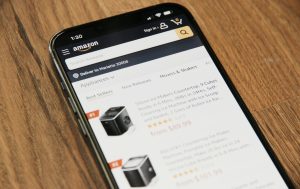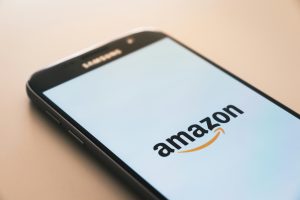A good landing page is an important prerequisite for converting organic traffic into leads. Regardless of what products or services you offer, this should be among your priorities. In our blog post, we will therefore answer the following questions:
What is a Landing Page?
A landing page is a specially designed page where users land after clicking on an advertisement or search engine entry. Here, the first impression counts. Your landing page should embody a clear user promise so that visitors stay longer than 10 seconds. In the new GA4, the bounce rate is redefined. Among other things, a session with interaction lasts at least 10 seconds.
The goal of landing pages is to motivate users to take a specific action, thereby generating leads from traffic. Most landing pages are not accessible from a website’s navigation menu. Instead, they serve only the purpose for which they are named: to be a “landing” place for users.
What is a Call to Action?
A call-to-action is a direct prompt to website visitors to take a specific action. This action can be anything relevant to your business. Possible call-to-actions include:
- Signing up for a newsletter
- Purchasing a product/service
- Scheduling a consultation appointment
- Registering on a website
- Initiating a download
- Following on social media
- Clicking on a link
- Downloading an e-book or brochure
- Registering for an event
- And many more
The goal of a CTA is not always direct conversion/sale. With call-to-actions like “Learn more here” or “Continue reading,” users can be encouraged to engage more deeply with a product or topic, thus increasing the time spent on your website.
The art of a CTA lies in addressing users directly and personally without making them feel pressured. CTAs should be concise and clear. Ideally, they consist of a short sentence or phrase, not exceeding the length of two sentences.
Visually, call-to-actions should stand out from the rest of the page. Buttons are often used, which stand out through colour, size, and placement. It’s better to avoid hard-to-read fonts and keep the call-to-action simple. You can also incorporate call-to-actions within text paragraphs. This is often suitable for encouraging further reading or learning more about a product.
Which Components Does a Landing Page Have?
A landing page must be particularly user-friendly and optimized for the target audience. It has the primary focus of informing about an offer while also encouraging users to interact with the page. However, a good landing page also utilizes SEO to rank as high as possible in organic search results. Essential components for building a successful landing page include:
The design of the website should guide users to the desired interaction. Additionally, a clear, not overly complicated design is recommended. Your logo provides good brand recognition for your company. In addition, a clear, concise headline that unmistakably describes your solution or product is crucial.
Keywords and SEO are as important for the text on your landing page as usability. Pay attention to good readability and avoid unnecessary verbosity. A good text describes the problem, the solution (your service/product), and encourages users to learn more and use CTAs.
The call-to-action prompts users to interact by clicking. CTAs should be prominently placed and can be repeated multiple times for better visibility.
The experience of existing customers is a convincing factor for many potential buyers. Most of them rely on product reviews to inform their purchase decisions. Therefore, it’s essential to incorporate these reviews directly into your landing page.
In addition to references, well-known seals also strengthen the trust of users in your company. Therefore, openly display your seals and certificates on the landing page.
What is an A/B test for a landing page?
A/B tests are used in online marketing to determine which version of a page, app, advertisement, newsletter, or similar performs better. Different variants are randomly presented to different users, and after a certain period, the effectiveness of both variations is assessed through statistical analysis.
For landing pages, A/B tests are highly suitable. Different versions with minor or major changes are created, all under the same URL, and presented to a similar number of users randomly. This allows for quick results from the tests when there is sufficient traffic.
Potential tests may involve changes such as:
- Headlines and text: Are headlines and text too lengthy or not informative enough? Are users not getting enough information to engage with a call-to-action (CTA) because they lose interest beforehand? A/B tests can help determine which information is crucial for your target audience.
- CTAs: Call-to-actions are central to a good landing page. With A/B tests, you can ascertain whether the placement of CTAs is optimal or if the wording is effective. It’s easy to determine which version yields more success. If users frequently click on CTAs, you’re doing it right.
- Design: A landing page should be visually appealing without being overwhelming. A/B tests allow for minor adjustments to the layout or testing different colours and fonts. Stick to your corporate design, but experiment with different versions.
Best Practices – Tips and Recommendations
You’ve probably already learned from our post that a simple, meaningful landing page is crucial. It works best without complicated, overloaded design. Always keep your target audience in mind and ask yourself: What do they want to see? What do they desire?
To conclude the post, here are a few final tips and best practices:
- Pay attention to the loading speed of your landing page. One in four users leaves a link after four seconds of loading time. Also, SEO considers the loading time of a page in its ranking, so check it regularly.
- The right headline is the first thing users read on your landing page. Short and meaningful are the most important characteristics here. Capture users’ attention so they stay on your page.
- Your landing page should focus on one product or service. Find the right balance of information you want to convey to your customers. Spark interest to learn more and encourage them to use CTAs, without overwhelming them with information.
- Call-to-actions are the friend of every landing page. Some would say they are the key point. Pay attention to the wording and use action verbs. Also, ask yourself: What would I like to see?
Contact Us Here
If you have any further questions about landing pages or are looking for an advertising agency to create the optimal landing page for you, contact us today! As one of the leading online marketing agencies in Thuringia, we have experience with successful websites and various clients. We look forward to hearing from you.





